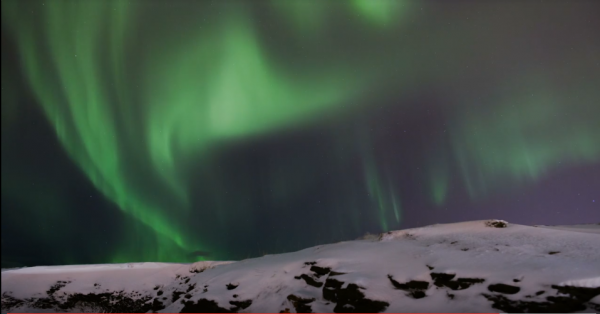
All of Alaska and even the northern Lower 48 states could see northern lights today, according to an aurora forecast from the University of Alaska Fairbanks’ Geophysical Institute.
“I would say this is a really exciting event for space scientists,” said Hyunju Connor, a professor in the Space Physics group at the Geophysical Institute.
The activity on the sun that produces coronal mass ejections like the one hitting Earth now, which causes the lights, follows 11-year cycles, Connor said. And the sun is just now entering a new 11-year cycle after a somewhat quiet period, she said.
“It seems like it’s getting stronger than the last solar cycle, so I’m excited, yes,” Connor said.
It’s good news for aurora researchers and viewers alike. But getting bombarded with the amount of energy expected to hit Earth the next couple days can also cause problems. It can disrupt power grids, telecommunication, even operations in space.
But researchers like Connor have studied those impacts for years. They use various instruments in space and at almost every level of Earth’s atmosphere to understand the aurora. That research has helped minimize impacts to people.
And, Connor said, even in a year like 2020 with so many unexpected events, people don’t need to fear the aurora, too. That’s because, while there is much to learn, we do understand quite a bit about how the aurora works.
Connor likened it to how people feared bad omens associated with Halley’s Comet, before they understood what really made it keep returning to our skies.
“(They thought) ‘maybe the gods will punish us or something.’ However, Newton figured out how Halley’s Comet is regularly visiting our Earth, and people started (getting) excited about these comet activities,” Connor said.
And one caveat to any premature excitement about the upcoming aurora activity: Clouds might obscure the show, so checking the weather forecast is probably a good idea.
Konnor also recommended checking out the aurora forecast at gi.alaska.edu, as well as the all-sky cameras. That way, she said, you don’t have to stand outside in the cold, waiting for the lights to show up.
Casey Grove is host of Alaska News Nightly, a general assignment reporter and an editor at Alaska Public Media. Reach him at cgrove@alaskapublic.org. Read more about Casey here.





